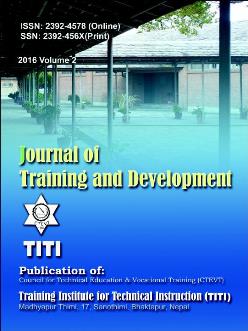Migration, HIV and Technical Education in Nepal
DOI:
https://doi.org/10.3126/jtd.v2i0.15442Keywords:
HIV, migration and technical educationAbstract
HIV and AIDS are crucial issues throughout the world. The first case in Nepal was diagnosed in 1988. Due to poverty, most of the people from the rural region of Nepal i.e. from the mid and far western region migrates to the neighboring country India to find work. During their stay in India, due to unsafe sex these migrants gets infected with HIV and AIDS. After returning home these migrants transmits the diseases to their spouses. The children born from infected parents also gets infected as well. The lack of technical education and vocational training compel these people to migrate in India to search for job without having any basic skill. The lack of knowledge on sexually transmitted diseases also increases the probability of getting infected. Therefore, it is necessary to make the people from the rural parts of Nepal aware of the sexually transmitted diseases, its causes and precautions. In addition, providing technical education and vocational training to rural people will enable them to secure more reliable job both outside and within the country.
Downloads
Downloads
Published
How to Cite
Issue
Section
License
Authors who publish with this journal agree to the following terms:
- Authors retain copyright and grant the journal right of first publication with the work simultaneously licensed under a Creative Commons Attribution License that allows others to share the work with an acknowledgement of the work's authorship and initial publication in this journal.
- Authors are able to enter into separate, additional contractual arrangements for the non-exclusive distribution of the journal's published version of the work (e.g., post it to an institutional repository or publish it in a book), with an acknowledgement of its initial publication in this journal.
- Authors are permitted and encouraged to post their work online (e.g., in institutional repositories or on their website) prior to and during the submission process, as it can lead to productive exchanges, as well as earlier and greater citation of published work (See The Effect of Open Access).




